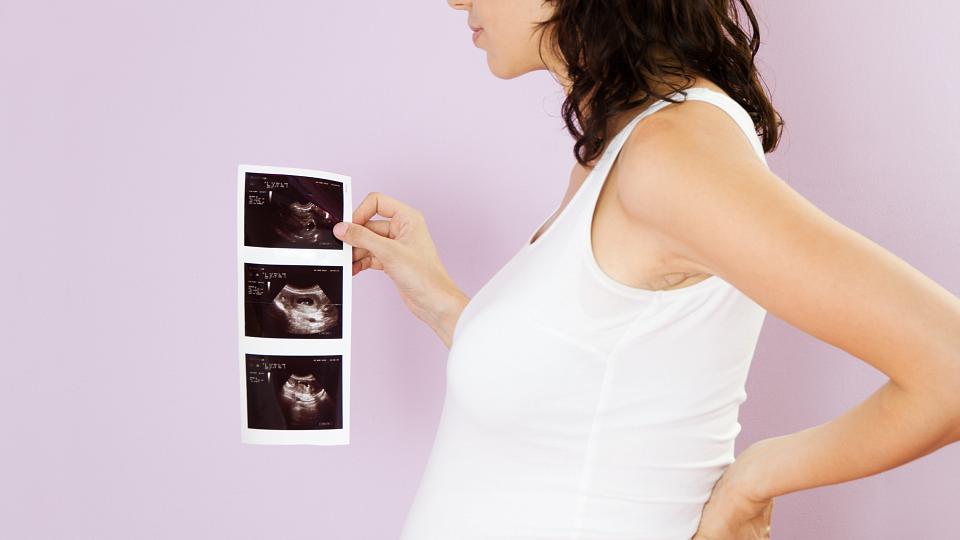What Is Placenta Accreta?
Placenta accreta is a pregnancy complication. It occurs when the placenta implants into scar tissue instead of healthy tissue in your uterine lining. Placenta accreta is most common in people who have had a cesarean section (C-section).
In pregnant patients with placenta accreta, more blood flows to the placenta than usual. As a result, delivering the placenta can cause significant emergency bleeding (hemorrhage) during your pregnancy or at the time of delivery. Placenta accreta doesn’t affect fetal development or harm your baby.
How Common Is Placenta Accreta?
Placenta accreta is rare. Studies show that placenta accreta affects about 1 in 588 pregnancies.
We recognize how distressing a placenta accreta diagnosis is. It’s common to feel disoriented, uncertain, or afraid. Our focus is providing comprehensive, advanced care. We’re with you through the rest of your pregnancy and beyond.
Why Choose University of Utah Health?
Most obstetrics providers treat placenta accreta once or twice in their entire career. U of U Health is one of the world’s highest-volume placenta accreta treatment centers. We are a national leader in uterine-sparing treatments for placenta accreta. Our team of providers include highly experienced, internationally recognized specialists who see dozens of patients with placenta accreta each year:
-
Maternal-fetal medicine (high-risk pregnancy) specialists and surgeons
-
Radiologists
-
Sonographers
-
Specialized anesthesiologists
-
Psychologists and social workers who provide mental health counseling and additional resources
As an academic medical center, we provide you with evidence-based treatments and participate in ongoing research studies. It’s our goal to keep you as safe as possible.
Our compassionate care team will give you as much time as you need for your appointment. This ensures that we answer all your questions and address your concerns. We also provide placenta accreta virtual consults and telehealth visits for patients across the Mountain West region living in Montana, Wyoming, Colorado, Idaho, and Nevada.
Placenta Accreta Types
Experts used to classify placenta accreta into three types. They don’t use these classifications today, but you might hear or read about these terms:
-
Placenta accreta—The placenta grows into a scar in the uterine lining.
-
Placenta increta—The placenta grows into the wall of the uterus.
-
Placenta percreta—The placenta grows through the uterus wall and possibly into nearby organs.
Sometimes, we can’t tell how deeply the placenta has grown until delivery. It’s important to understand that placenta accreta is a spectrum that ranges from somewhat mild to complex to life-threatening.


Placenta Accreta Risk Factors
The biggest risk factor for placenta accreta is a prior C-section. Any other surgery that could cause uterine scarring also increases your risk.
Some other factors can increase your risk of placenta accreta:
-
Difficult deliveries of the placenta in past pregnancies
-
Endometrial ablation, removing some of the uterine lining to treat heavy bleeding
-
Removal of scar tissue for fertility treatment
Placenta Accreta Symptoms
Most people don’t have any symptoms of placenta accreta. Some people experience bleeding during early pregnancy.
Placenta Accreta Ultrasound & Diagnosis
We typically diagnose placenta accreta during your second-trimester ultrasound, but it can also be detected earlier in some cases. Your obstetrics provider may notice that the placenta has attached to scar tissue. In these cases, they will refer you for more ultrasounds and refer you for a consultation with one of our placenta accreta specialists.
Placenta Accreta Treatment
The standard treatment for placenta accreta is to deliver by C-section at 34–36 weeks of pregnancy. Our goal is to avoid labor so you don’t have heavy bleeding.
Patients at U of U Health have two treatment options:
- Procedural management—Your maternal-fetal medicine specialist delivers the baby through C-section. Then they perform a hysterectomy to remove your uterus, cervix, and the placenta. This is the traditional treatment approach for placenta accreta.
- Conservative management—U of U Health doctors are national leaders in more conservative treatment options. They lead studies funded by the National Institutes of Health (NIH) to research alternative treatments. We offer conservative management through the study. Your maternal-fetal medicine specialist delivers your baby through C-section. Then they leave the placenta inside your uterus. The placenta goes away slowly over about 2–5 months. Some of it exits your body through blood and fluid. Your body reabsorbs some of it. About 80% of patients who choose this treatment avoid hysterectomy.
Your treatment plan depends on several factors, including your preferences and whether conservative management is safe for you. Some people who experience heavy bleeding during pregnancy may not be good candidates for conservative management. When possible, however, conservative management can offer patients an alternative that may allow them to preserve their fertility.


Your Delivery Team
We have several specialists available on your delivery day. Experts in these areas help ensure you have a healthy birth:
- Anesthesia
- Blood Bank
- General Obstetrics
- Gynecologic surgeons specializing in complicated pelvic surgery
- Labor and Delivery
- Maternal Fetal Medicine
- Neonatal Intensive Care Unit (NICU)
- Nursing and other support staff
Long-Term Effects of Placenta Accreta
A placenta accreta diagnosis can have significant psychological effects. People with the condition often feel worried throughout their pregnancy. It’s common to experience anxiety, depression, or post-traumatic stress after your delivery.
If you have a hysterectomy to treat placenta accreta, you can’t get pregnant again. Losing your fertility may cause grief and other challenging emotions.
Our clinic includes the expertise of social workers and psychologists. They offer you offer mental health counseling and support. We discuss the risks of medical trauma and post-traumatic stress at your diagnosis. We’re with you and your family every step of the way. We’ll work together with you to help manage psychological effects.
Find a Placenta Accreta Clinic Specialist
Anne M. Kennedy, MB, BCh, BAO
Placenta AccretaChristine M. Warrick, MD
Placenta Accreta
Make an Appointment
The Placenta Accreta Clinic operates every Wednesday morning at University of Utah Hospital. However, your first ultrasound assessment for placenta accreta may occur at any of our community health center locations.
Call 801-213-2995 to make an appointment with an obstetrics or high-risk pregnancy provider. Some insurance plans may require referrals. We recommend checking your insurance first before making an appointment.
Resources & Programs for Parents-to-Be
Early Pregnancy Assessment Clinic
The first trimester can be an exciting, confusing, and overwhelming experience. Our Early Pregnancy Care team providers offer comprehensive, non-judgmental early pregnancy care.
Utah Pregnancy After Loss Program
The Utah Pregnancy After Loss Program is designed specifically to support families after a pregnancy loss, newborn death, or severely complicated pregnancy.
UPWARD: Utah Peripartum Pelvic Floor Wellness and Recovery After Delivery Program
Many pregnant mothers have pelvic floor symptoms before and up to 12 months following birth. UPWARD offers expert care to women experiencing pelvic floor issues during a vulnerable time.
SUPeRAD: Substance Use & Pregnancy—Recovery, Addiction, and Dependence Clinic
The SUPeRAD Clinic provides services and treatments for pregnant and postpartum people with substance use disorders and addiction.
YoMingo®: Prenatal Education on the Go
U of U Health offers anytime, anywhere education for expectant mothers through YoMingo®, with all the tools and support you need at every stage of your pregnancy. Find information on prenatal care, labor & birth, postpartum, breastfeeding, and newborn care.
Perinatal Education
Childbearing is an exciting time of growth, change, and personal choices for you and your family. To help you prepare, we offer perinatal education on a variety of subjects related to your pregnancy.












